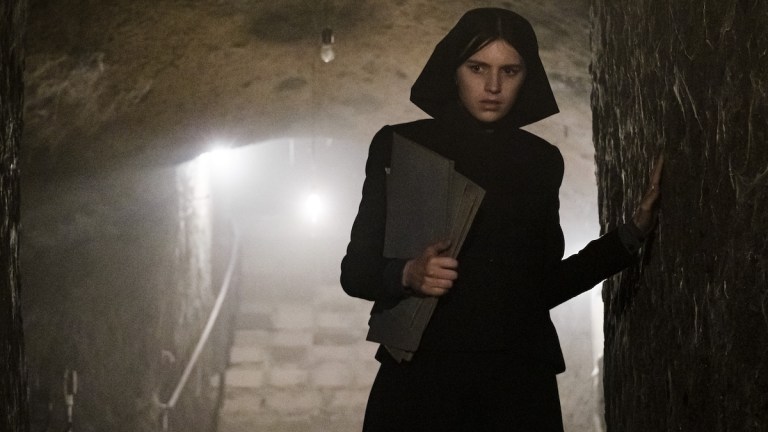The First Omen’s Most Shocking Scene is its Most Important
“What my life has been about for the last year and a half is making sure that that image got into the film,” according to director Arkasha Stevenson.

Contains spoilers for The First Omen.
If you’ve seen The First Omen you’ll probably know the scene Den of Geek and director Arkasha Stevenson are talking about. In it, our hero, young would-be nun Margaret (Nell Tiger Free) witnesses a woman in the birthing room at the convent, traumatically having her baby. Her feet are in stirrups, she visibly distressed, and no wonder. Because what Margaret, and we, see as the head starts to crown is a demon hand appearing out of the woman’s vagina. It is extremely disturbing and it was vitally important to Stevenson that the image made it into the film.
“What my life has been about for the last year and a half is making sure that image got into the film,” she explains. “I think the reason why it’s so important is because we are talking about body horror, but what was really important for us not to do, is to fetishize the body horror and, and by proxy, the women who the horror was happening to.”
As the film progresses we learn that women’s bodies have been violated to a horrifying extent. Sister Silva has voluntarily been repeatedly impregnated by a jackal, experienced wildly accelerated gestation periods and given birth over and over again to babies who frequently died. Margaret is one such child, who has not died. Her fate is to be drugged and raped by the jackal who is her own father. Bestiality and incest combine to birth the antichirst, Damien himself. Given her female characters are subjected to such horrors Stevenson went out of her way to ensure this scene was shown, and shown as she intended.
“One of my favorite movies is Klute, the Alan Pakula film with Jane Fonda,” she says. “I think that that’s such a mind blowing film, because it is a character piece about a woman, and horrible things happen to her. But you know that woman so well, that you really care. The terror is taken to an entirely different level, because it’s personalized. And we wanted to take that mindset to the body horror. And so even with this scene that we’re talking about keeping the woman’s breath in the sound design, being able to see her face, and humanize her was really important. But then this image is hugely important because that is the theme of the movie. It’s a woman’s body being violated from the inside out. If we’re going to tell that story, we need to show that imagery. We were NC-17 For a long time. And just had to keep going back and forth with the rating for it.”
It makes sense. If your film is about the exploitation of women’s bodies, then shying away from the reality of what is happening doesn’t feel right. The First Omen and Immaculate appear to be part of a rise in religious based pro-choice movies. Hiding its eyes from women’s bodies wouldn’t do the themes justice.
The First Omen is in theaters now.
